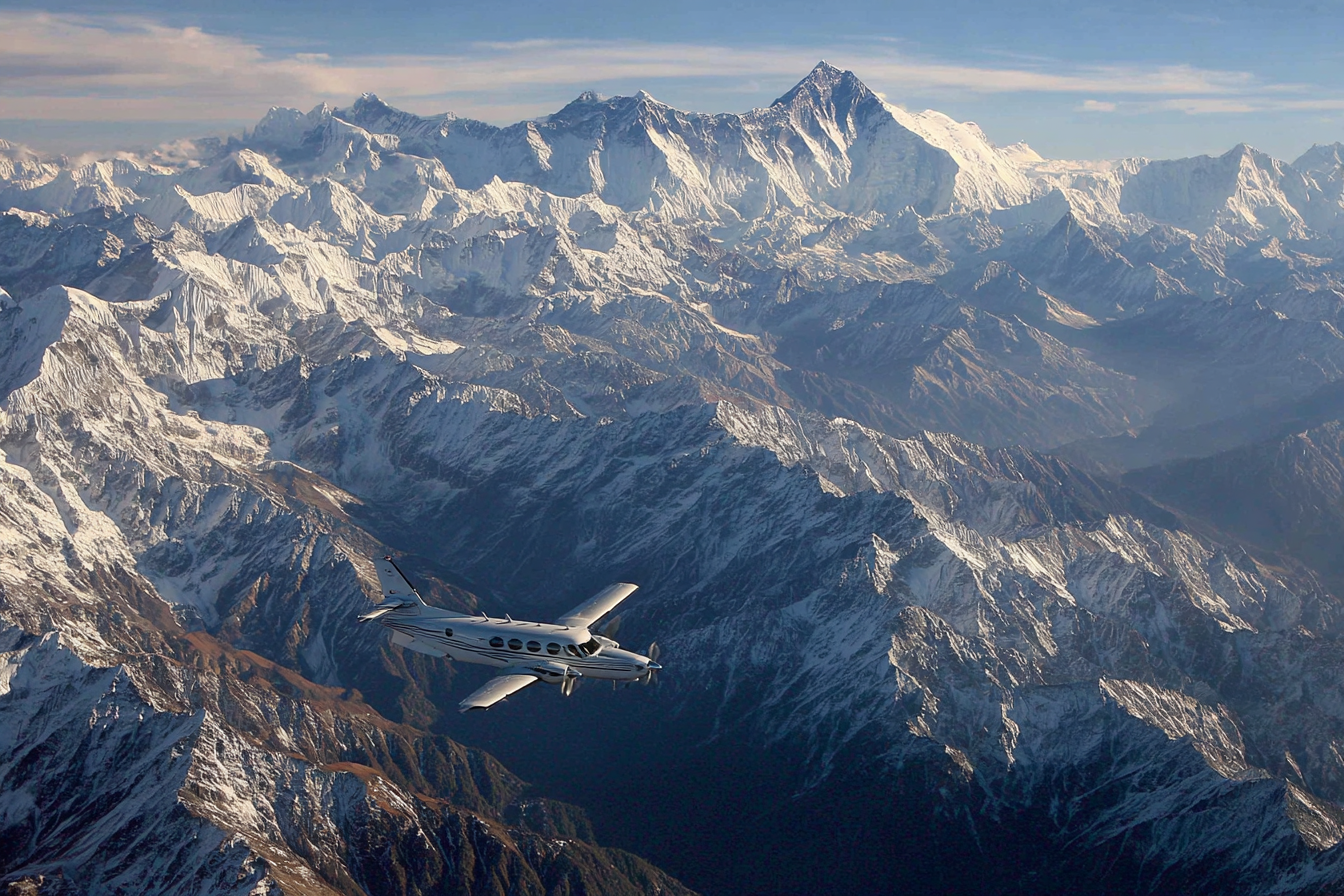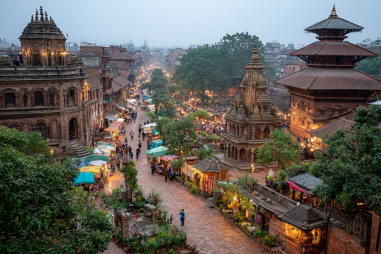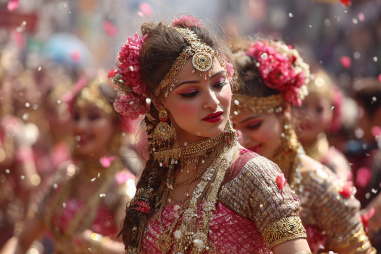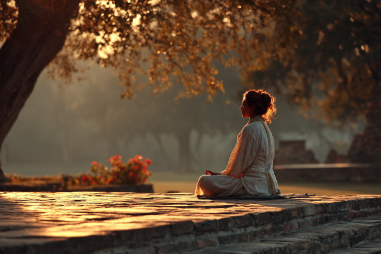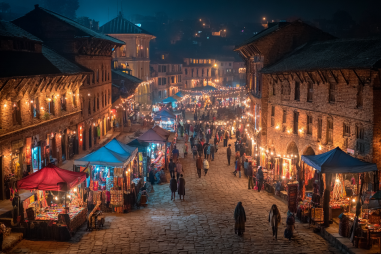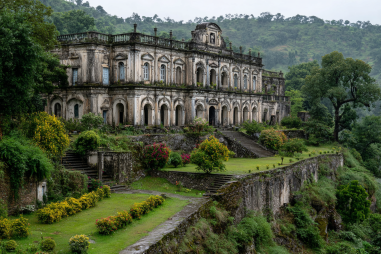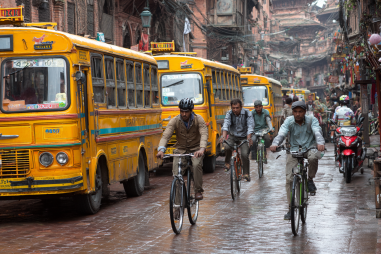Nepal, home to some of the world’s highest and most iconic mountains, offers a spectacular way to witness the grandeur of the Himalayas through mountain flights. For travelers who dream of getting close to Everest and its neighboring peaks without the physical demands of trekking, these scenic flights provide a breathtaking aerial adventure. From panoramic views of towering snow-capped summits to a unique perspective of Nepal’s rugged terrain, mountain flights deliver an unforgettable experience. Here’s everything you need to know about Nepal mountain flights—how to book, what routes to choose, when to fly, and how to make the most of this awe-inspiring journey.
Exploring the Popular Mountain Flight Routes in Nepal
Nepal’s mountain flight options primarily take off from Kathmandu, the bustling capital city nestled in a valley surrounded by mountains. These scenic flights follow set routes that offer the best visibility and dramatic views of the Himalayas, including Mount Everest, the highest peak on Earth.
The most popular flight route is the Everest Mountain Flight, which is typically a 30- to 45-minute round trip. It heads out of Kathmandu and flies northeast towards the Everest region, offering a close-up view of not just Everest (8,848 meters), but also other iconic peaks like Lhotse, Nuptse, Makalu, and Cho Oyu. Passengers can admire the rugged terrain, deep valleys, and sometimes even glimpse the base camps used by climbers.
Another favored route includes the Annapurna mountain flight, where travelers get panoramic views of the Annapurna range, Dhaulagiri, and the stunning peaks around Pokhara. Some operators even offer combination flights or personalized routes, allowing travelers to experience both Everest and Annapurna in one trip.
Booking Your Mountain Flight: Pricing and How to Reserve
Booking a mountain flight in Nepal is straightforward but it’s important to consider timing and reputable operators to ensure safety and a memorable experience. Most flights depart daily from Tribhuvan International Airport in Kathmandu, weather permitting.
You can book your flight through travel agencies in Nepal, hotels in Kathmandu, or directly with the airline operators who specialize in mountain flights like Yeti Airlines and Buddha Air. It’s often recommended to book at least a few days in advance, especially during peak tourist seasons, to secure your seat.
Pricing for mountain flights generally falls between $150 and $200 USD per person. This price includes the round trip flight, airport taxes, and sometimes bottled water or snacks onboard. While slightly more expensive than a standard domestic flight in Nepal, the breathtaking views and unique experience make it well worth the investment.
When to Take a Mountain Flight: Best Time and Weather for Clear Views
Weather plays a critical role in the success and enjoyment of mountain flights in Nepal. Visibility is key to appreciating the majestic peaks, so planning your flight during the best season greatly increases your chances of clear, stunning views.
The ideal months for mountain flights are during the autumn season (late September to November) and the spring season (March to May). During these periods, the air tends to be clear and stable with minimal cloud cover. January and February, although colder, can also offer crisp, clear days but with the challenge of colder temperatures and occasional haze.
The monsoon season (June to August) is generally avoided because heavy rains, cloud cover, and turbulent weather conditions often ground flights or block visibility. Early morning flights are preferable as the weather tends to be calmer with less atmospheric disturbance than in the afternoon.
What to Expect During Your Nepal Mountain Flight
Once you board the small aircraft, usually a turboprop plane designed for short-haul flights, the excitement quickly builds as the plane taxis and lifts off over Kathmandu valley. You’ll experience a smooth ascent through beautiful landscapes of terraced hills, rivers, and scattered villages.
As the plane climbs higher, the spectacle of towering Himalayan peaks surrounding you begins to unfold. The pilot often circles strategically, providing ample time to soak in the views and take photos. Flight attendants may point out notable peaks and landmarks, enriching the experience with local insights.
The entire flight is typically around an hour, with most of the magic happening on the outbound leg toward the mountains. Passengers usually have ample window space to capture the magnificence of Everest’s majestic summit and other towering peaks standing proudly against the blue sky.
Tips for Photography and Comfort on Your Flight
To capture the best photos during your mountain flight, keep these handy tips in mind:
- Choose a window seat: To ensure the best views, request a window seat on the side of the plane facing the mountains. Most flights are right-hand seating.
- Camera settings: Use a fast shutter speed to reduce blur caused by the plane’s movement. A zoom lens will help capture distant peaks sharply.
- Dress comfortably: While temperatures inside the plane are typically mild, it’s good to wear layers as weather can be chilly in the mountains.
- Bring sunglasses and a hat: The bright sunlight reflecting off snow can be intense, so eye protection helps.
- Keep your seatbelt fastened: For safety and comfort, always follow crew instructions.
Safety Measures and Regulations for Mountain Flights
Safety is paramount when flying in mountainous terrain. Nepal’s mountain flight operators adhere to strict regulations and guidelines set by the Civil Aviation Authority of Nepal. Pilots are experienced in navigating the tricky altitudes and weather conditions common in the Himalayas.
Some important points to note include:
- Flights operate only under favorable weather conditions, and cancellations are common if visibility is poor, so it’s wise to schedule your flights with some flexibility.
- Aircraft used are small but well-maintained, typically with a seating capacity of 12 to 18 passengers.
- Passengers are required to follow safety briefing instructions closely and wear seatbelts throughout the flight.
- Emergency protocols are in place, and crew are trained to manage mountain flying risks.
Integrating Mountain Flights into Your Nepal Travel Itinerary
Mountain flights in Nepal are a perfect complement to trekking, cultural tours, or city exploration. Many travelers choose to book their flight at the start or end of their Nepal visit to get a spectacular overview of the landscapes they’ll be exploring on foot.
If you are trekking the Everest or Annapurna regions, a mountain flight can serve as an inspiring introduction or rewarding finale. For those short on time or not inclined to trek, the flight alone provides incredible Himalayan vistas that rival even multi-day treks.
Additionally, mountain flights pair well with visits to Kathmandu’s historic sites or the lakeside city of Pokhara, allowing a scenic aerial perspective before continuing ground-based adventures.
Travel agents and tour operators often bundle mountain flights with other sightseeing or adventure activities, making booking and logistical planning straightforward.
Elevate Your Nepal Adventure with a Mountain Flight Experience
Nepal’s mountain flights offer a unique, accessible way to experience the awe-inspiring Himalayas in all their glory. Whether you’re a seasoned trekker, a nature lover, or simply someone eager to witness Everest from the skies, this scenic flight provides a once-in-a-lifetime viewpoint without the physical demands of climbing or trekking.
From breathtaking close-ups of the world’s tallest peaks to the serene beauty of Nepal’s rugged terrain, a mountain flight opens up a new dimension of travel adventure. By planning carefully with the right timing and operator, your flight over the Himalayas will be an unforgettable highlight of your Nepal journey, filling you with inspiration and memories to cherish forever.

